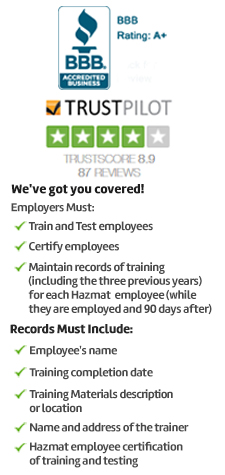
Labor & Industry Ergonomics Training Course

This Labor and Industry Ergonomics certification trains participants to have better understanding on the benefits of ergonomics in different work environment, symptoms and causes of musculoskeletal disorders, safety standards applicable for workers, employers’ responsibilities to ensure ergonomic safety and solutions and best safety practices followed by workers of any industry and labour type. The course emphasizes students to gain awareness on various erogonomical methods to prevent musculoskeletal and other related health disorders among workers.
Governing regulations
OSHA has formulated industry-specific safety standards for workers and employers which have specific and useful guidelines to prevent workplace injuries and health problems among workers due to ergonomic reasons.
OSHA regulations do not specify particular set of industries, but applicable all industries and employers have to follow the guidelines formulated under the General Duty Clause, Section 5(a)(1) which direct industry heads to keep workplaces free from risks and safety issues which also include ergonomic hazards. OSHA has the right to indicate the presence of ergonomic hazards under the General Duty Clause or send ergonomic hazard letters to employers as part of their ergonomic safety enforcement program.
Course Overview
Ergonomics play a role in deciding the good health of workers in different industry and work environments. This course specifically deals with the regulations formulated by OSHA on workplace ergonomics and safety standards applicable for workers and employers. Participants will get to know various health issues faced by workers including musculoskeletal disorders and related injury while carrying out heavy lifting works or inappropriate postures.
The syllabus also includes various causes of common injuries and solutions based on scientific approach, practices and procedures to reduce ergonomic hazards. Participants will also go through case studies to know the advantages of ergonomics training and improve understanding by following various links to additional resources.
Who Must Take this Course?
As every industry or work environment offers ergonomic hazards to workers, it is important that employees, workplace managers, supervisors and also employers should understand the causes, regulations and solutions for ergonomic hazards. This course is recommended for all labor and industry workers that include people belong to agriculture, heavy engineering, construction and manufacturing.
Course Format
Our OSHA Labor and Industry Ergonomics training course provides students with quality content, audio and graphical explanations, case studies and question bank for self-check the understanding of topics before the final exam.
Every successful student will be entitled for a hard copy of completion certificate who also will get a print of a wallet card.
Continuing education credits?
Each participant will get 0.2 CEUs (or 2 CMEs) for successfully completing the training.
Topics Covered
- About This Course
- Section 1-Course Objectives
- Section 2-Introduction to Labor and Industry Ergonomics
- Section 3-Why Do We Need Safety Training?
- Section 4-Basic Concepts of Ergonomics
- Who Is At Risk?
- Common MSD Injuries
- Symptoms of MSDs
- Benefits of Ergonomics
- Section 5-WMSDs
- Awkward Postures
- Forceful Exertion
- Forceful Exertion-Grip
- Forceful Exertion-Lifting
- Repetitive Motions
- Contact Stress
- Static Posture
- Vibration
- Environment
- Personal Contributing Factors
- Section 6-Safety Standards
- Safety Standards-OSHA
- Safety Standards-CDC: NIOSH
- Safety Standards-ANSI
- Section 7-Safety Responsibilities
- Safety Responsibilities of Employers
- Safety Responsibilities of Employees
- Safety Responsibilities of Health Care Providers
- Section 8-Ergonomic Solutions
- Engineering Improvements
- Administrative Improvements
- Personal Protective Equipment
- Section 9-Industry Examples and Best Practices
- Manufacturing Ergonomic Best Practices
- Agriculture Ergonomic Best Practices
- Laborer Ergonomic Best Practices
- Section 10-Summary
- Section 11-Additional Resources
- Section 12-Exam

 NEBOSH CERTIFICATE
NEBOSH CERTIFICATE NEBOSH DIPLOMA
NEBOSH DIPLOMA IOSH
IOSH SAFETY DIPLOMA
SAFETY DIPLOMA CPD UK
CPD UK ROSPA UK
ROSPA UK FOOD SAFETY
FOOD SAFETY 



